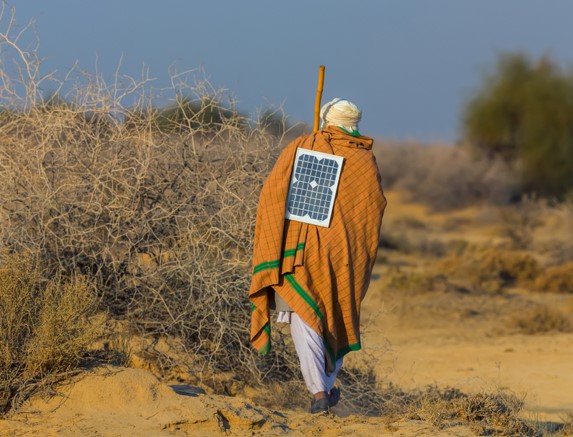- The ‘undocumented’ rise of solar in Pakistan has seen it emerge as possibly the sixth largest solar market in the world today.
- Unlike other markets, solar in Pakistan has hardly brought plaudits for the government, which has been indifferent or hostile to solar growth even.
Readers will be aware that we have occasionally tracked the growth of solar in Pakistan here. What has been interesting is the fact that the country, while performing poorly at an institutional level, has seen the kind of solar boom that would rival almost any country elsewhere over the past year and more. Reports claim that Industrial, agricultural and residential solar demand has led to imported Chinese modules totaling a shocking13 gigawatts (GW) in the first half of the year, with projections of 22GW by year-end. Importantly, less than 2 GW of these numbers would be accounted by formal government sanctioned large projects. Versus an official number of 1.3 GW of installed capacity by 2023 end, actual installed capacity is estimated to be twice as high, and expected double every year to 2029.
Low Solar Costs Versus High Grid Electricty Costs A No Brainer For Consumers
A shaky, undependable and expensive formal system of electricity supply from the national grid, which has driven more and more Pakistanis who can afford it towards solar. As power prices have risen (by more than 150% over the past three years), the case for solar has only become stronger, and thanks to further drop in costs, bullet proof now.
Keep in mind that with none of the protective tariffs on solar equipment seen in key consuming countries like the US and India exist in in Pakistan for solar panels and now, battery storage. That means costs are well below those in India, thanks to their almost unhindered import from all weather friend and global supplier China. Chinese firms like Jinko Solar, JA Solar and Longi are almost as well known as the more consumer focused firms like Haier and others from that country. Pakistan’s solar imports from China have consistently overachieved on projections for solar imports and installations, forcing many of these firms to give it the kind of attention the numbers demand.
Legacy Power Sector Hit Further
But far from being welcomed, all this has come at a heavy cost to the government, and going ahead, the national grid itself. Mostly Hydro and thermal powered, the grid faces a double blow in the form of falling consumption from its best paying customers, and then, the risk to grid stability from the rapidly rising but intermittent solar supply.
Keep in mind that a key part of the reason for rising power costs, outside of the Pakistani rupee’s depreciation against the US dollar, has been the issue of fixed charges. Thus, the country pays these charges to multiple power plant operators at a time when contracted power capacity is much higher than actual demand, especially at the higher power rates. It will take 4000-5000 MW of fresh demand from industries and other credit worthy segments to ensure the system can actually benefit from this surplus capacity and bring down power costs for all. But with solar eating into existing demand itself, besides any incremental demand, the grid faces a grave challenge of stability and viability.
The Federal government, trapped between the rising ‘circular debt’ of the power sector and resentment from an influential section of the population that has gone for solar, has been holding back on cutting down net metering benefits to be replaced by a gross metering regime so far. But there is every likelihood it will act soon to prevent further losses, by capping payments for solar power sent to the grid at PKR 12 or lower, versus the grid costs of power ranging from PKR 55 to Rs 70. Experts believe even this low rate will not deter the addition of solar capacities, with many even choosing to go off grid with a token connection to charge batteries. In effect, those who can afford it are looking to use the state grid as a battery charger, and nothing else, happy to power their homes with solar power as far as possible.
Solutions
Unable to supply dependable power itself, an unpopular government faces the prospect of taking hard decisions on this solar growth, or tackling the long deferred problems with the cost of grid electricity. Expectedly, it has gone for the softer option of targeting power producers, seeking to renegotiate PPAs and tariffs with them. While many power producers (including Chinese owned ones) see the logic of this due to issues of long term viability, the fact that existing PPAs are being torn up will probably make attracting future investments in the power sector, and other sectors more difficult. Most of the PPAs in question have between 5 to 12 years or more to go, so even waiting it out is not a solution. The ideal solution, of a revival in the economy that will lead to higher power consumption to avail of surplus contracted capacity is looking more and more challenging considering the unstable situation in the country. What that means is possibly more and more off grid solar for the richest, with even the poor who find grid power unaffordable likely to seek solar backed solutions that compromise between low prices and low availability of power itself. An unappetising prospect for a country looking to regain its footing after a painful adjustment over the past two years due to its economic mismanagement and subsequent IMF mandated reforms. A sense of urgency to this situation could only come from large grid collapses as seen in the past few years, and a much bigger supporting hand from all weather friend China.


